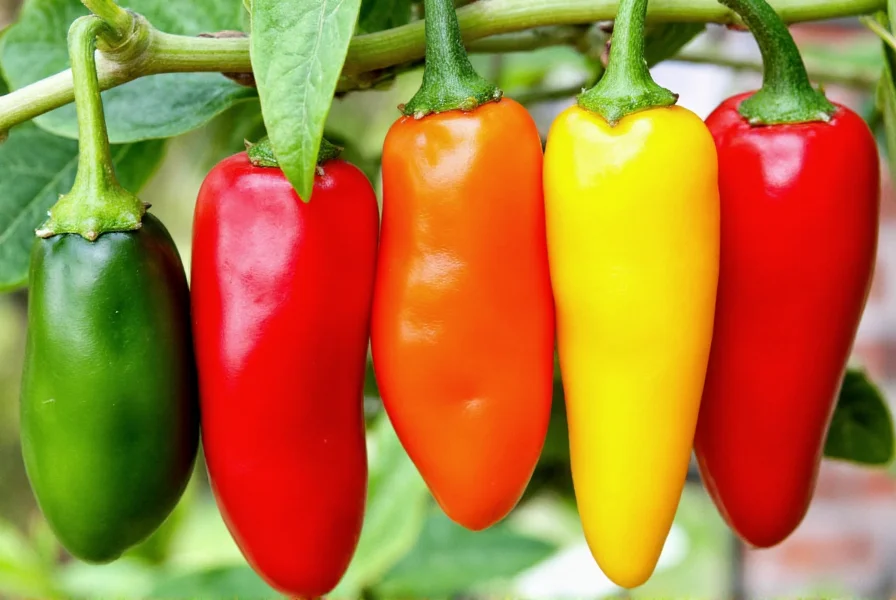Capsicum peppers represent one of the most diverse and widely consumed plant groups worldwide, yet significant confusion exists about their classification and characteristics. Understanding these versatile plants requires examining their botanical foundation, varieties, and practical applications.
Botanical Classification and Origins
The Capsicum genus comprises approximately 30 species native to the Americas, with cultivation spreading globally after European contact. Unlike black pepper (Piper nigrum), capsicum peppers belong to the Solanaceae family, sharing lineage with tomatoes and eggplants. The key distinguishing feature is the presence of capsaicinoids—primarily capsaicin—which create the characteristic heat in many varieties.
Five domesticated species form the foundation of commercial production:
| Species | Common Examples | Heat Level (SHU) | Primary Uses |
|---|---|---|---|
| Capsicum annuum | Bell peppers, Jalapeños, Serranos | 0-50,000 | Fresh consumption, cooking |
| Capsicum frutescens | Tabasco, Malagueta | 30,000-100,000 | Sauces, condiments |
| Capsicum chinense | Habanero, Scotch Bonnet | 100,000-350,000 | Specialty hot sauces |
| Capsicum baccatum | Aji peppers | 30,000-50,000 | South American cuisine |
| Capsicum pubescens | Rocoto, Manzano | 30,000-100,000 | Andean regional dishes |
Regional Terminology Differences
The term "capsicum" creates significant confusion due to regional naming conventions. In countries like Australia, New Zealand, and India, "capsicum" exclusively refers to bell peppers (non-pungent varieties). Conversely, in botanical and scientific contexts, capsicum denotes the entire genus. This distinction explains why many searchers ask about the difference between capsicum and bell pepper—in regions using the narrow definition, they're considered identical, while scientifically, bell peppers represent just one category within the capsicum family.
Nutritional Composition and Health Implications
Capsicum peppers offer exceptional nutritional density, particularly in vitamin C and carotenoids. A single medium red bell pepper contains approximately 169% of the daily recommended vitamin C intake—more than twice that of citrus fruits. The capsicum pepper nutritional benefits extend to multiple compounds:
- Carotenoids: Beta-carotene, lutein, and zeaxanthin support eye health
- Vitamin B6: Essential for metabolism and nervous system function
- Quercetin: A flavonoid with anti-inflammatory properties
- Capsaicin: The active compound in hot varieties showing potential metabolic benefits
Research suggests regular consumption of sweet vs hot capsicum varieties may provide different health advantages. While sweet peppers excel in vitamin content, hot peppers' capsaicin shows promise in studies examining pain management, metabolism, and cardiovascular health. However, individual tolerance varies significantly.
Culinary Applications Across Global Cuisines
The versatility of capsicum peppers makes them indispensable in world cuisines. Understanding types of capsicum peppers helps cooks select appropriate varieties:
- Sweet bell peppers: Ideal for roasting, stuffing, and raw applications in salads
- Mild heat varieties (Poblano, Anaheim): Perfect for Mexican dishes like chiles rellenos
- Medium heat peppers (Jalapeño, Serrano): Essential for salsas and pickling
- High heat varieties (Habanero, Ghost pepper): Used sparingly in hot sauces and specialty dishes
Chefs considering growing capsicum peppers at home should note that soil pH between 6.0-6.8, consistent moisture, and temperatures above 70°F (21°C) optimize growth. Most varieties require 60-90 days to maturity from transplanting.

Common Misconceptions Clarified
Several persistent myths surround capsicum peppers:
- Misconception: All capsicum peppers are hot
Reality: Bell peppers contain negligible capsaicin, registering 0 on the Scoville scale - Misconception: The seeds contain most of the heat
Reality: Capsaicin concentrates in the placenta (white pith), not the seeds - Misconception: Green peppers are unripe versions of colored varieties
Reality: While true for many cultivars, some varieties maintain green color when mature
Understanding these distinctions helps consumers make informed choices about capsicum pepper health effects and culinary applications.











 浙公网安备
33010002000092号
浙公网安备
33010002000092号 浙B2-20120091-4
浙B2-20120091-4